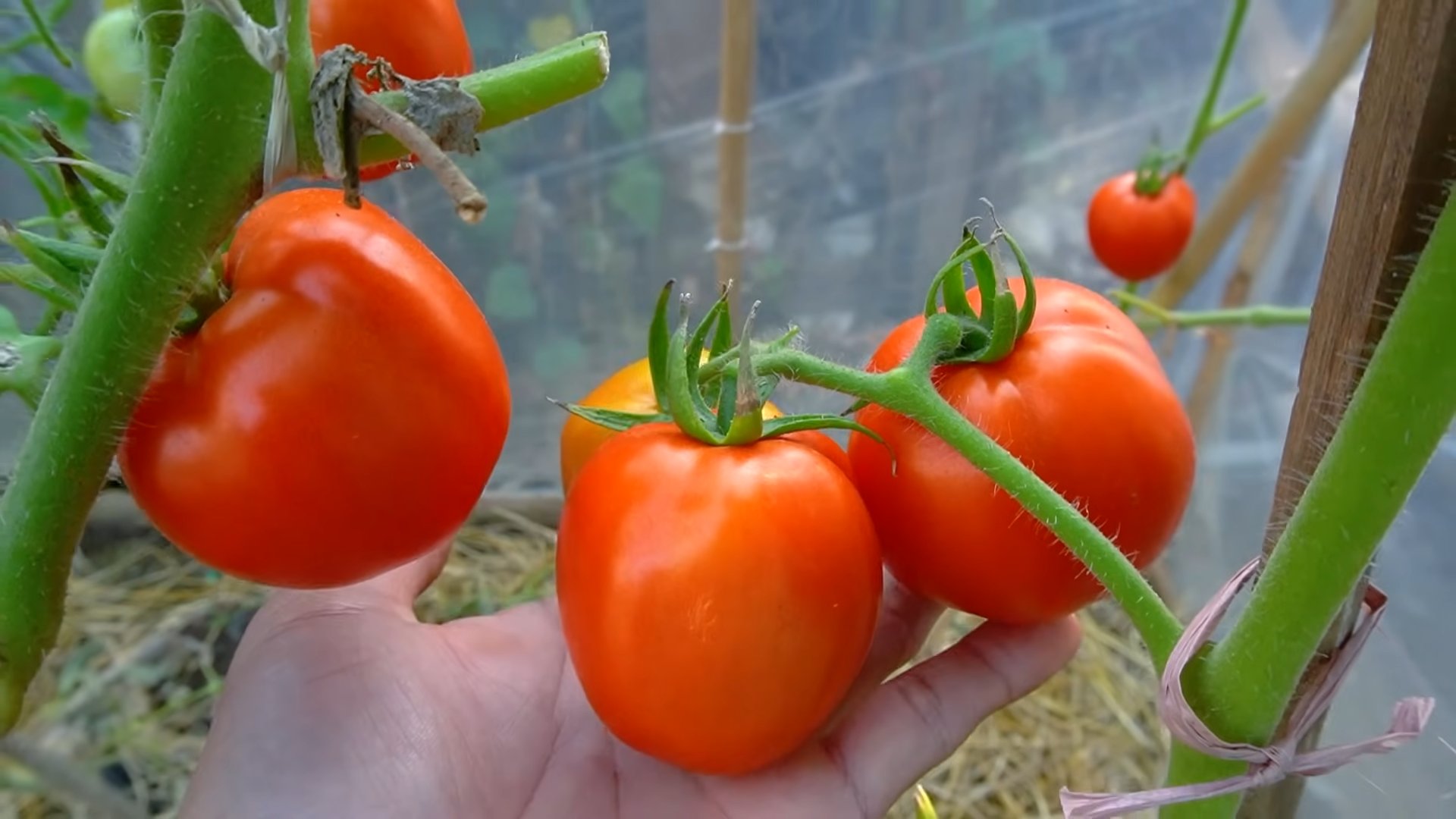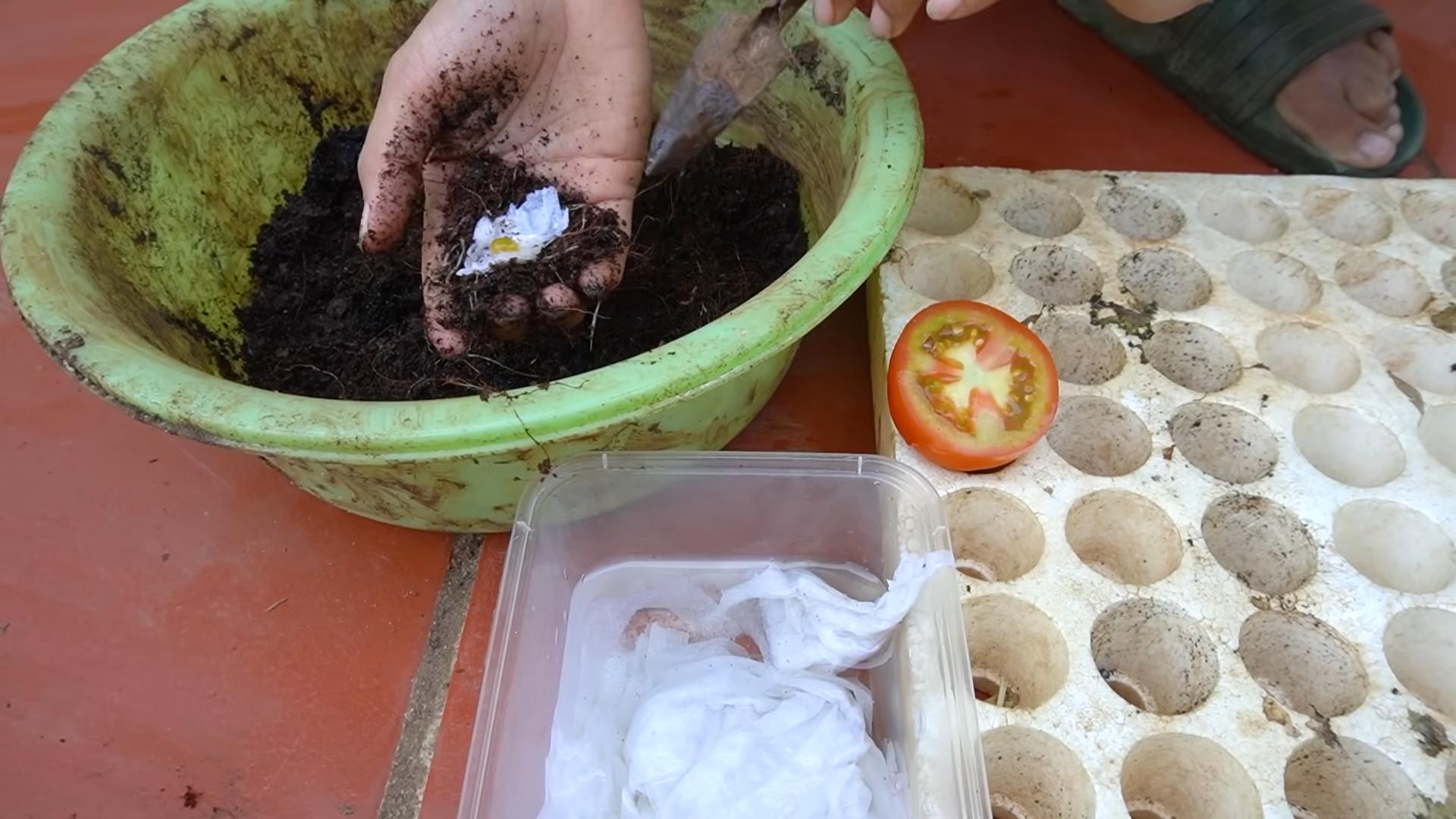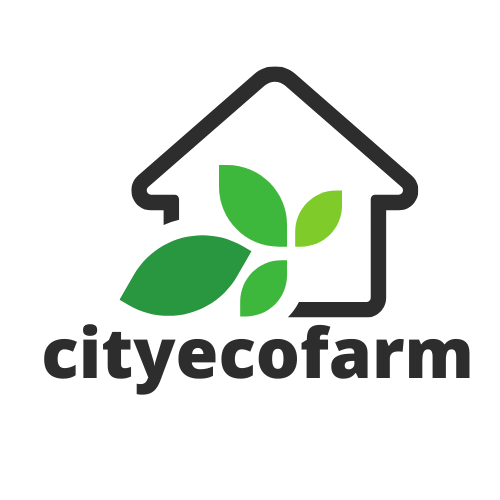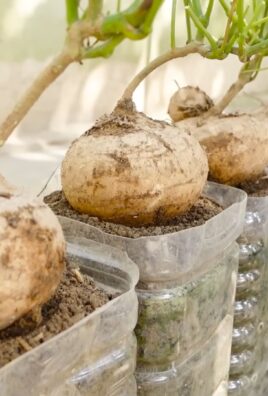Year Round Tomato Growing might seem like a gardener’s impossible dream, especially if you live outside of perpetually sunny climates. But guess what? It’s absolutely achievable, and I’m here to show you how! Imagine biting into a juicy, sun-ripened tomato in the dead of winter – a burst of summer flavor when you need it most. That’s the magic we’re unlocking today.
The history of extending the growing season is as old as agriculture itself. Cultures around the world have developed ingenious methods, from simple cold frames to sophisticated greenhouses, to coax life from the earth even when the weather says otherwise. While tomatoes originated in South America, their global popularity has fueled the desire to cultivate them everywhere, regardless of the natural growing season.
Why is year round tomato growing so appealing? Well, beyond the sheer joy of fresh, homegrown produce, it’s about control. Control over the quality of your food, control over your grocery bill, and control over your connection to nature. Store-bought tomatoes, especially out of season, often lack the vibrant flavor and nutritional value of homegrown varieties. Plus, let’s be honest, there’s something incredibly satisfying about nurturing a plant from seed to fruit, especially when everyone else is bundled up indoors. This DIY guide will provide you with the tricks and hacks you need to enjoy delicious tomatoes all year long, no matter where you live. Let’s get started!

DIY Year-Round Tomato Growing: From Seed to Salsa, Even in Winter!
Okay, tomato lovers, listen up! Are you tired of those bland, tasteless grocery store tomatoes, especially during the off-season? Do you dream of sinking your teeth into a juicy, sun-ripened tomato all year round? Well, dream no more! I’m going to walk you through how to grow tomatoes indoors, allowing you to enjoy fresh, homegrown goodness no matter the weather outside. It might seem daunting, but trust me, with a little planning and effort, you can have a thriving indoor tomato garden.
Choosing the Right Tomato Variety
The first step to year-round tomato success is selecting the right variety. Not all tomatoes are created equal, especially when it comes to indoor growing. We need to focus on determinate or dwarf varieties that are compact and don’t require a ton of space. Indeterminate varieties, while producing fruit over a longer period, can get HUGE and are generally not suitable for indoor setups.
Here’s a breakdown of what to look for:
* Determinate vs. Indeterminate: Choose determinate (bush) varieties. They grow to a specific size and produce most of their fruit at once. Indeterminate varieties keep growing and producing throughout the season, which can be challenging indoors.
* Dwarf Varieties: These are even smaller than determinate varieties and are perfect for containers. Look for names like “Tiny Tim,” “Micro Tom,” “Venus,” or “Red Robin.”
* Early Maturing: Opt for varieties that mature quickly (50-70 days). This will give you a faster turnaround and more harvests throughout the year.
* Disease Resistance: Look for varieties labeled with disease resistance codes (e.g., V, F, N, T, A). This will help prevent common tomato problems.
* Cherry or Grape Tomatoes: These tend to be easier to grow indoors than larger beefsteak varieties. They also ripen faster and are less prone to blossom end rot.
Some of my personal favorite indoor tomato varieties include:
* Tiny Tim: Super compact and produces lots of small, sweet tomatoes.
* Red Robin: Another dwarf variety that’s easy to manage and yields well.
* Roma: A determinate paste tomato that’s great for sauces and canning.
* Patio: A compact determinate variety that produces medium-sized tomatoes.
Getting Started: Seed Starting and Germination
Now that we’ve chosen our varieties, it’s time to get those seeds started! This is a crucial step, so let’s do it right.
1. Gather Your Supplies:
* Tomato seeds (of course!)
* Seed starting trays or small pots (I prefer using peat pots or biodegradable pots to minimize transplant shock)
* Seed starting mix (a light, sterile mix that drains well)
* Spray bottle filled with water
* Heat mat (optional, but highly recommended for faster germination)
* Grow light (essential for strong seedlings)
* Clear plastic dome or plastic wrap (to create a humid environment)
2. Sow the Seeds:
* Moisten the seed starting mix thoroughly. It should be damp but not soggy.
* Fill the seed starting trays or pots with the moistened mix.
* Make a small indentation (about 1/4 inch deep) in the center of each pot.
* Place 2-3 seeds in each indentation. This increases the chances of at least one seed germinating.
* Gently cover the seeds with the seed starting mix.
* Lightly mist the surface with water using the spray bottle.
3. Create a Humid Environment:
* Cover the seed starting trays or pots with a clear plastic dome or plastic wrap. This will help retain moisture and create a humid environment, which is essential for germination.
4. Provide Warmth:
* Place the seed starting trays or pots on a heat mat. The ideal soil temperature for tomato seed germination is between 75-85°F (24-29°C).
* If you don’t have a heat mat, place the trays in a warm location, such as on top of your refrigerator.
5. Provide Light:
* Place the seed starting trays or pots under a grow light. Keep the light on for 14-16 hours per day. This will prevent the seedlings from becoming leggy (tall and spindly).
6. Monitor and Water:
* Check the seed starting mix daily to ensure it remains moist. Mist with water as needed.
* Once the seeds germinate (usually within 5-10 days), remove the plastic dome or plastic wrap.
7. Thin the Seedlings:
* Once the seedlings have developed their first true leaves (the second set of leaves after the initial seed leaves), thin them to one seedling per pot. Choose the strongest, healthiest-looking seedling and snip off the others at soil level with scissors. Don’t pull them out, as this can disturb the roots of the remaining seedling.
Transplanting and Potting Up
Once your seedlings have grown a bit and are strong enough to handle, it’s time to transplant them into larger pots. This will give them more room to grow and develop a strong root system.
1. Choose the Right Pot:
* Select a pot that is at least 5 gallons in size. Larger pots are better, as they provide more room for the roots to grow and hold more moisture.
* Make sure the pot has drainage holes to prevent waterlogging.
2. Prepare the Potting Mix:
* Use a high-quality potting mix that is well-draining and contains plenty of organic matter. I like to use a mix of compost, peat moss, and perlite.
3. Transplant the Seedlings:
* Gently remove the seedling from its seed starting tray or pot. If you used peat pots, you can plant the entire pot directly into the larger pot.
* Dig a hole in the potting mix that is large enough to accommodate the root ball of the seedling.
* Place the seedling in the hole and gently backfill with potting mix.
* Water thoroughly.
4. Provide Support:
* As the tomato plants grow, they will need support to prevent them from falling over. You can use stakes, cages, or trellises.
* Insert the support into the pot before the plant gets too big to avoid damaging the roots.
Lighting, Watering, and Fertilizing
Now that your tomato plants are in their permanent pots, it’s time to focus on providing them with the right growing conditions.
1. Lighting:
* Tomatoes need at least 6-8 hours of direct light per day to produce fruit. If you don’t have a sunny window, you will need to use grow lights.
* LED grow lights are a great option because they are energy-efficient and produce very little heat.
* Position the grow lights about 6-12 inches above the plants.
* Adjust the height of the lights as the plants grow.
2. Watering:
* Water the tomato plants regularly, but don’t overwater. The soil should be moist but not soggy.
* Water deeply, allowing the water to drain out of the drainage holes.
* Check the soil moisture regularly by sticking your finger into the soil. If the top inch of soil is dry, it’s time to water.
* Avoid getting water on the leaves, as this can promote fungal diseases.
3. Fertilizing:
* Tomatoes are heavy feeders and need regular fertilization to produce fruit.
* Use a balanced fertilizer that is specifically formulated for tomatoes.
* Follow the instructions on the fertilizer label.
* Fertilize every 2-3 weeks.
* You can also supplement with compost tea or other organic fertilizers.
Pollination
Tomatoes are self-pollinating, but they often need a little help indoors. Without wind or insects to transfer pollen, you’ll need to hand-pollinate your plants.
1. Hand-Pollination Methods:
* Shaking the Plant: Gently shake the plant a few times a week to release pollen.
* Using a Toothbrush or Cotton Swab: Gently brush the inside of each flower with a toothbrush or cotton swab to transfer pollen from the stamen to the pistil.
* Using a Vibrator: Use a small electric toothbrush or vibrator to gently vibrate the flower stem. This will release pollen.
2. When to Pollinate:
* Pollinate the flowers in the morning, when the pollen is most viable.
* Repeat the pollination process every few days.
Dealing with Pests and Diseases
Even indoors, your tomato plants can be

Conclusion
So, there you have it! Mastering year-round tomato growing isn’t just a pipe dream; it’s an achievable reality with a little planning and the right techniques. We’ve explored the core elements that make this possible, from selecting the right varieties and providing adequate light to controlling temperature and ensuring proper pollination. But why should you embark on this journey?
The answer is simple: fresh, flavorful, homegrown tomatoes, bursting with sunshine and goodness, available whenever you crave them. Imagine the joy of adding a vibrant slice of your own tomato to a winter salad, or crafting a rich, homemade sauce in the dead of January. No more bland, store-bought imitations! This is about reclaiming control over your food source and enjoying the unparalleled taste of truly fresh produce.
Beyond the taste, year-round tomato growing offers a rewarding connection to nature, even when the world outside is blanketed in snow. It’s a therapeutic activity, a chance to nurture life, and a constant reminder of the cyclical beauty of the natural world. Plus, it’s a fantastic way to reduce your carbon footprint by minimizing your reliance on commercially grown, transported produce.
Don’t be afraid to experiment! Try different tomato varieties suited for indoor growing. Consider adding companion plants like basil or marigolds to enhance flavor and deter pests. Explore different hydroponic systems or soil mixes to find what works best for your environment. You can even try succession planting, staggering your planting times to ensure a continuous harvest throughout the year.
Ready to take the plunge? We encourage you to give year-round tomato growing a try. Start small, learn as you go, and don’t be discouraged by initial setbacks. Every gardener faces challenges, and the key is to learn from them and adapt your approach.
We’re confident that with the knowledge and techniques shared in this article, you’ll be well on your way to enjoying a bountiful harvest of delicious tomatoes, no matter the season. And most importantly, we want to hear about your experiences! Share your successes, your challenges, and your tips in the comments below. Let’s build a community of year-round tomato growers and learn from each other’s journeys. Happy growing!
Frequently Asked Questions (FAQ)
What are the best tomato varieties for year-round indoor growing?
Choosing the right tomato variety is crucial for success with year-round tomato growing. Determinate or dwarf varieties are generally preferred for indoor cultivation because they tend to be more compact and require less space. Some excellent choices include:
* ‘Roma’: A classic determinate variety known for its paste-type tomatoes, perfect for sauces and canning.
* ‘Patio’: A compact determinate variety that produces small, juicy tomatoes ideal for salads and snacking.
* ‘Tiny Tim’: An ultra-compact dwarf variety that thrives in small containers and produces cherry-sized tomatoes.
* ‘Micro Tom’: The smallest tomato variety available, perfect for growing on a windowsill.
* ‘Early Girl’: While technically a semi-determinate, ‘Early Girl’ can be successfully grown indoors with proper pruning and support. It’s known for its early and abundant yields.
* ‘Black Cherry’: An indeterminate variety, but can be grown indoors with proper pruning and a large enough container. It produces delicious, dark-colored cherry tomatoes.
When selecting your variety, consider factors such as size, growth habit (determinate vs. indeterminate), disease resistance, and your personal taste preferences.
How much light do indoor tomato plants need?
Adequate light is essential for successful year-round tomato growing. Tomato plants require at least 6-8 hours of direct sunlight per day. If you don’t have access to a sunny window, you’ll need to supplement with artificial lighting.
* LED Grow Lights: LED grow lights are the most energy-efficient and effective option for indoor tomato growing. Look for full-spectrum LED lights that provide a balanced range of wavelengths to support all stages of plant growth.
* Fluorescent Grow Lights: Fluorescent grow lights, such as T5 or T8 bulbs, can also be used, but they are less energy-efficient than LEDs.
* Light Placement: Position your grow lights 6-12 inches above the tomato plants, adjusting the height as the plants grow.
* Light Timer: Use a timer to ensure your tomato plants receive a consistent 14-16 hours of light per day.
What is the ideal temperature for indoor tomato plants?
Maintaining the right temperature is critical for optimal tomato growth and fruit production.
* Daytime Temperature: The ideal daytime temperature for tomato plants is between 70-80°F (21-27°C).
* Nighttime Temperature: The ideal nighttime temperature is between 60-70°F (16-21°C).
* Temperature Fluctuations: Avoid drastic temperature fluctuations, as they can stress the plants and reduce fruit set.
* Heating and Cooling: Use a space heater or cooling system to maintain consistent temperatures, especially during extreme weather conditions.
How do I pollinate indoor tomato plants?
Tomato plants are self-pollinating, but they often need assistance with pollination indoors, where there are no wind or insects to help.
* Hand Pollination: Gently shake the tomato plants several times a week to release pollen. You can also use a small brush or cotton swab to transfer pollen from one flower to another.
* Electric Toothbrush: Use an electric toothbrush to vibrate the flower stems, which helps to release pollen.
* Fan: Place a small fan near the tomato plants to circulate air and aid in pollination.
What type of soil or growing medium should I use for indoor tomato plants?
The right growing medium is essential for providing your tomato plants with the nutrients and support they need.
* Potting Mix: Use a high-quality potting mix specifically formulated for vegetables. Avoid using garden soil, as it can be too heavy and may contain pests or diseases.
* Soilless Mix: Soilless mixes, such as coco coir or peat moss, provide excellent drainage and aeration.
* Hydroponics: Hydroponic systems, such as deep water culture or nutrient film technique, can be used to grow tomatoes without soil.
How often should I water indoor tomato plants?
Watering frequency depends on several factors, including the size of the container, the type of growing medium, and the temperature.
* Check Soil Moisture: Water when the top inch of soil feels dry to the touch.
* Water Thoroughly: Water deeply until water drains out of the bottom of the container.
* Avoid Overwatering: Overwatering can lead to root rot and other problems.
* Consistent Moisture: Maintain consistent soil moisture, but avoid letting the plants sit in standing water.
What are some common pests and diseases that affect indoor tomato plants, and how can I prevent them?
Indoor tomato plants are susceptible to various pests and diseases.
* Aphids: Small, sap-sucking insects that can weaken plants. Control aphids with insecticidal soap or neem oil.
* Whiteflies: Small, white, flying insects that can damage leaves. Control whiteflies with sticky traps or insecticidal soap.
* Spider Mites: Tiny mites that can cause stippling on leaves. Control spider mites with miticides or by increasing humidity.
* Fungal Diseases: Fungal diseases, such as powdery mildew and early blight, can affect tomato plants. Prevent fungal diseases by providing good air circulation and avoiding overhead watering. Use fungicides if necessary.
How often should I fertilize indoor tomato plants?
Tomato plants are heavy feeders and require regular fertilization.
* Start with a Balanced Fertilizer: Use a balanced fertilizer (e.g., 10-10-10) when transplanting seedlings.
* Switch to a Tomato Fertilizer: Once the plants start to flower, switch to a tomato fertilizer with a higher phosphorus content (e.g., 5-10-5) to promote fruit production.
* Fertilize Regularly: Fertilize every 2-3 weeks, following the instructions on the fertilizer label.
* Liquid Fertilizer: Use a liquid fertilizer for easy application and absorption.
How do I prune indoor tomato plants?
Pruning is essential for maintaining the shape and productivity of indoor tomato plants, especially indeterminate varieties.
* Remove Suckers: Remove suckers (the shoots that grow between the main stem and the branches) to encourage the plant to focus its energy on fruit production.
* Prune Lower Leaves: Prune lower leaves that are yellowing or touching the soil to improve air circulation and prevent disease.
* Top the Plant: If the plant becomes too tall, you can top it by cutting off the top of the main stem.
How long does it take to grow tomatoes indoors year-round?
The time it takes to grow tomatoes indoors year-round depends on the variety and growing conditions.
* Seed to Harvest: From seed to harvest, it typically takes 60-90





Leave a Comment